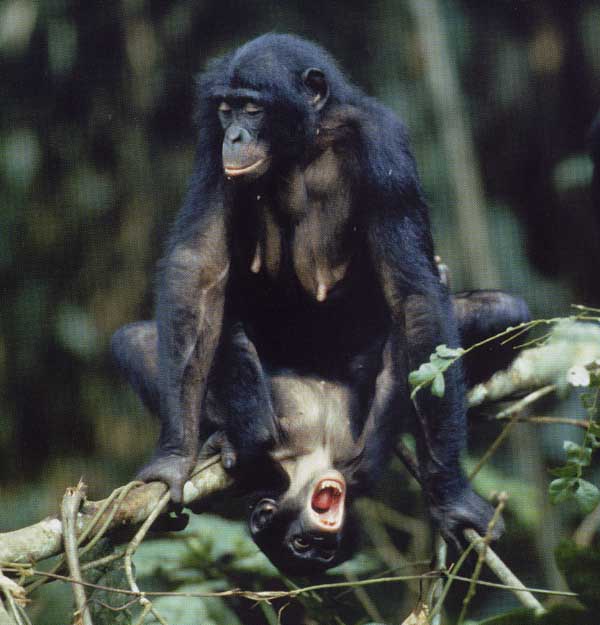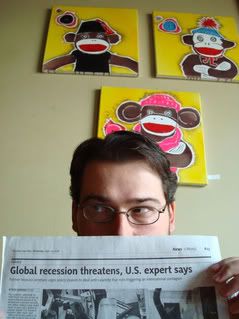An Exclusive Interview with Primatologist Frances White

Frances White is one of the world's leading experts on wild bonobo populations. She recently returned from the Democratic Republic of Congo where she was carrying out her field research. The following is an interview I had with Dr. White in preparation of my article "Behind Enemy Lines" in Wildlife Conservation magazine. Part 2 of this interview can be seen here.
Well, let me start with, what got you interested in bonobos?
Oh, my goodness. That’s a long time ago. I started as a PhD student at Stonybrook interested in large mammals, but the only large mammals I could work with at Stonybrook were primates. So it started quite by accident. But having heard the early stories about what was going on with the species, especially the relationships among the females and the way that when you first contact the group the males all run away and the females sort of band together and stay (which is the opposite of what common chimps do) was extremely fascinating. So the hints about differences in social organizations really piqued my interest.
And these stories you heard about bonobos, did they show themselves in the field?
The first site I ever saw of them, my very first contact with pygmy chimps was looking up onto two females who were GG-rubbing. That was the first thing that I ever saw and that does kind of influence what you think about a species, watching this female-female same-sex behavior. It was clear right from then that there was something very different going on and it really piqued my interest because these are basically then cohesive, cooperative, unrelated females which is so unique among primates.
A lot has been made of the non-aggressive society that bonobos live in, relative to other apes.
Well, they’re not free of aggression. I would say that’s not true. I have seen knock-down, drag out fights. I’ve seen males especially aggressing against other males, I’ve seen males aggressing against females. It’s relatively rare to see female against female aggression, but there is a little bit of it. Females are subordinate to males, it’s male dominant and males win in single fights. Its what’s called a dyadic relationship. With a single male and a single female the female won’t win but coalitions of females can win against males. So that’s not what we would call a female dominant situation.
Coalitions which don’t form in chimpanzees.
That’s right, those coalitions don’t form with chimpanzees.
Unlike chimpanzees, bonobos are a female-bonded society. Could you describe this difference?
Sure. The core of the party are cohesive females. And the females, if they split off from each other will stay in contact and if they find a food patch they’ll call in other females. Among males you see more individualistic strategies, that of competing with other males rather than being a cohesive male-bonded society. So if you just look at the social organization, at the grooming patterns or friendly patterns in any form, you’ll see far more female-female friendships and very few male-male friendships and a great deal of tension among males.
Why is it significant that female-bonding occurs between non-relatives?
Because that’s very unusual among primates. Female-bonding, as we use it in a general term is a typical bonding pattern among monkey species. And in monkeys the female bondings are among relatives. Evolutionarily it makes sense that if you’re going to help someone, you help a relative. So that female bonding is based on female relatives. So it was thought very strongly that you do not get cooperative groups of unrelated females. So the fact that pygmy chimps are cooperative females and are unrelated to each other is really unique. It’s also really important when you think of human evolution in terms of showing the range of behaviors that are possible.
Bonobo sexual behavior has been described as “pan-sexuality” and is with all members of the group. Is this the case?
Right, with all members of the group. Although, you have to be careful, because although females will mate with all males its not just mating with all males indiscriminately or for no reason. Females tend to get choosier around ovulation. So it’s not that they’ll mate with anyone and it doesn’t matter who, that’s not true. Mating is used for many different reasons. So, they can get choosy or even form consortships where a female will leave the group and go off with one male when she’s close to ovulating. Also, mating can happen just in response to male aggression. So you get sexual coercion, where males aggress against other females, females mate with them and it calms the male down. Plus you have mating under tense situations, males will go and try to get ahead of a group of females and then males fight to protect the food patch and when the females arrive they will have to mate with the male who’s won to get into the tree. So you’ll see an awful lot of mating an awful lot of the time but it happens for many, many different reasons. It’s not just indiscriminate. There are many behavioral strategies that are solved through sexual behavior.
From your own research and your own interest in bonobos, how can learning about bonobos teach us about our own evolution?
Basically, if we go back to Sarah Hrdy’s original book [The Woman That Never Evolved] that was written before a lot of the pygmy chimp stuff was done, about how human evolution is sort of restricted by this idea that females are less cooperative than males, pygmy chimps basically say that this is not the case. Female cooperation among non-relatives is well within the realm of the suite of behaviors that could be shown by a human ancestor. I think the thing that is most important to me in terms of thinking about human evolution, is that it shows the variation that’s possible.
We know that modern chimpanzees and pygmy chimpanzee populations vary enormously from each other. So the Wamba studies show very different things from the Lomako studies, and that’s all very much in the range of what pygmy chimps can do. We know that when we look at modern human populations, the range of modern societies, there are everything from monogamous societies to polyandrous societies to polygynous societies. We know that human beings are very, very broad today and we can relate some of the variation back to ecology.
Given the variation we see in modern humans, to me it says that there was no single ancestral human social system. That humans, like apes, are polymorphic in their social behavior. So the behavior can be related to the ecology in an area, and given what we know about human evolution, about how it spread from Africa throughout Asia, I would expect human social systems to be extremely polymorphic, extremely variable between different populations. So it removes this idea that you have one ancestral social organization and, in fact, expands it to include a really wide range of different social systems depending on local conditions.
So the jury on human nature is still out.
(Laughs) Yes.
Part 2: Bonobo Conservation
Jul 27, 2007
Bonobo Behavior

Subscribe to:
Post Comments (Atom)

















No comments:
Post a Comment